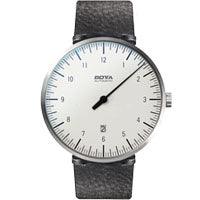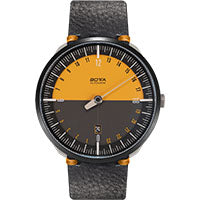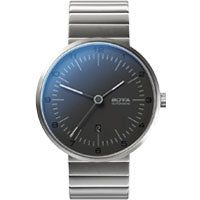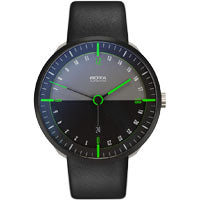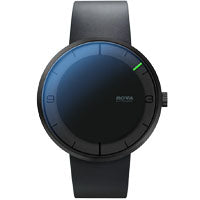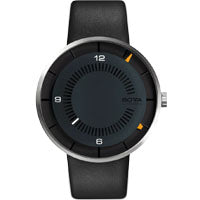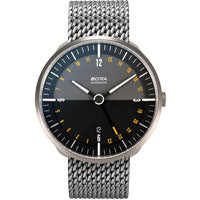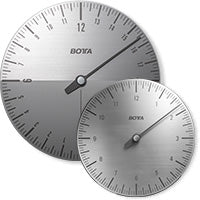Portrait of Markus Schraml, published by morethandesign
For people who tend to think in terms of time periods rather than specific points in time, one-hand watches are ideal companions because they promote a relaxed approach to time. Nevertheless, these watches provide an astonishingly accurate reading, especially when they were designed by the pioneer of the one-hand principle, Klaus Botta.
Probably the most radical measure in terms of reduction in watch design is the restriction to only one hand. Yet this idea is by no means new - on the contrary. Klaus Botta already applied the one-hand principle 30 years ago. It was then that the founder and owner of BOTTA developed the world's first one-handed wristwatch - the UNO. When, in the mid-1980s, watch production had reached a peak in the diversity of wristwatches and hands, Klaus Botta followed this development with horror, because for him the readability of most watches had reached a low point. As a result, he created a watch that only had the hour hand. Klaus Botta: "My thought behind the development of the one-hand principle was: away from the growing complexity - towards a reduction to the essentials. The simple UNO display was intended to help decelerate the pace of everyday life".
In fact, the design of the UNO's dial ensures that the time is intuitively captured. The hour hand can display the time with astonishing accuracy using the 5-minute scale. The excellent graphic design and the unique hand position allow the time to be captured with just a fleeting glance. In addition, to-the-minute time indications are rather unusual in everyday life. Statements such as "shortly after one" or "twenty to nine" already correspond more to reality. The clarity of one hand of this type of watch simply ensures this relaxed approach to time, which allows for a very fast perception of time, but at the same time prevents it from being too precise. However, once you have familiarized yourself with your one-handed watch, you can at least tell the time to the minute.
Recently, BOTTA brought the UNO Quartz 44 mm to the fan community, a new edition of the one-handed classic. Klaus Botta has fundamentally modernized the concept of the UNO for this purpose and also significantly improved readability once again. The enlargement of the watch's diameter from 40 to 44 mm and the slimming of the case edge make the watch appear more generous. The maximum resolution of the scale, which is drawn up to the edge of the dial, allows even greater reading accuracy. The strap lugs are concealed beneath the case. Therefore, despite its diameter, this watch can be worn on narrow wrists.
One-hand watch: from 12 to 24 hours
"Strictly speaking, the 12-hour clock is an alienation of reality. After all, the day has 24 hours and not twelve. A 12-hour clock therefore shows the same time twice a day. With a 24-hour watch, on the other hand, the time of day is clearly displayed. The time display becomes particularly clear when the 24-hour display is combined with the one-hand principle. In this case, the earth's rotation and the rotation of the hands are exactly synchronized," says Klaus Botta about his idea of equipping the one-handed watch with a 24-hour dial, thereby further advancing the perceived deceleration of the day. On the UNO24, the hand rises above the horizon of the dial early in the morning, symbolizing the sunrise. At midday, the hand also points vertically upwards and towards evening it reaches the lower night half of the dial. Then at midnight the hand reaches the date line, the date jumps forward and the new day begins.
"Every watch has a theme from which the design is derived," explains Klaus Botta. "We take a lot of time to implement this concept in our design". Before a timepiece is presented to the public, it must go through a long development phase. The one-hand watches are first created on the computer. Using a powerful CAD program, all the components are developed in three dimensions and then assembled to form a whole. "Before an object is ripe for the construction of a prototype, there are 50 to 200 designs, for example for just one dial, which are weighed against each other. Only the best design moves on to the next phase," Botta explains the working method in his studio in Königstein im Taunus.
This text was first published by morethandesign. We thank the design magazine and the author Markus Schraml for allowing us to put the portrait online.

